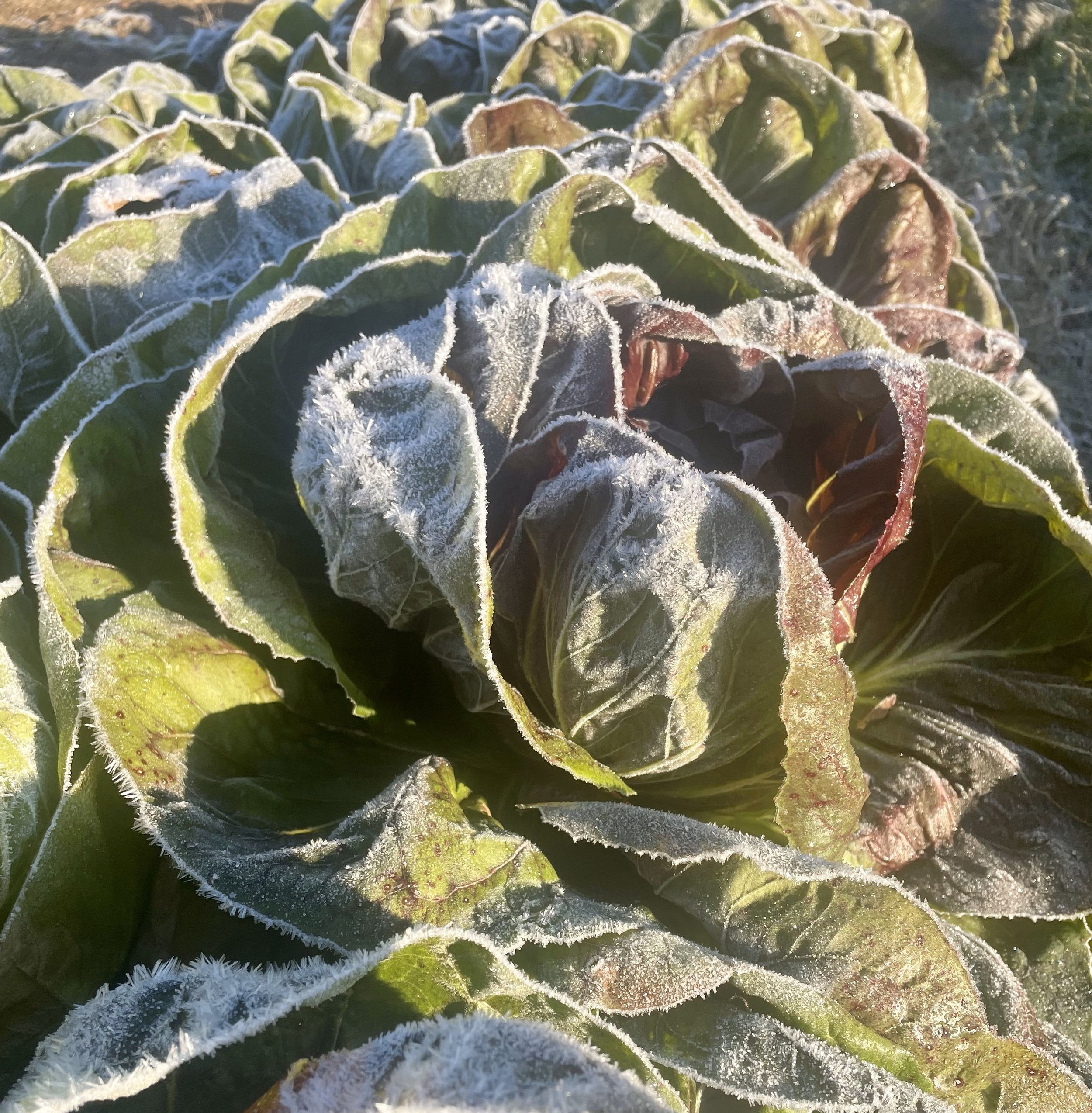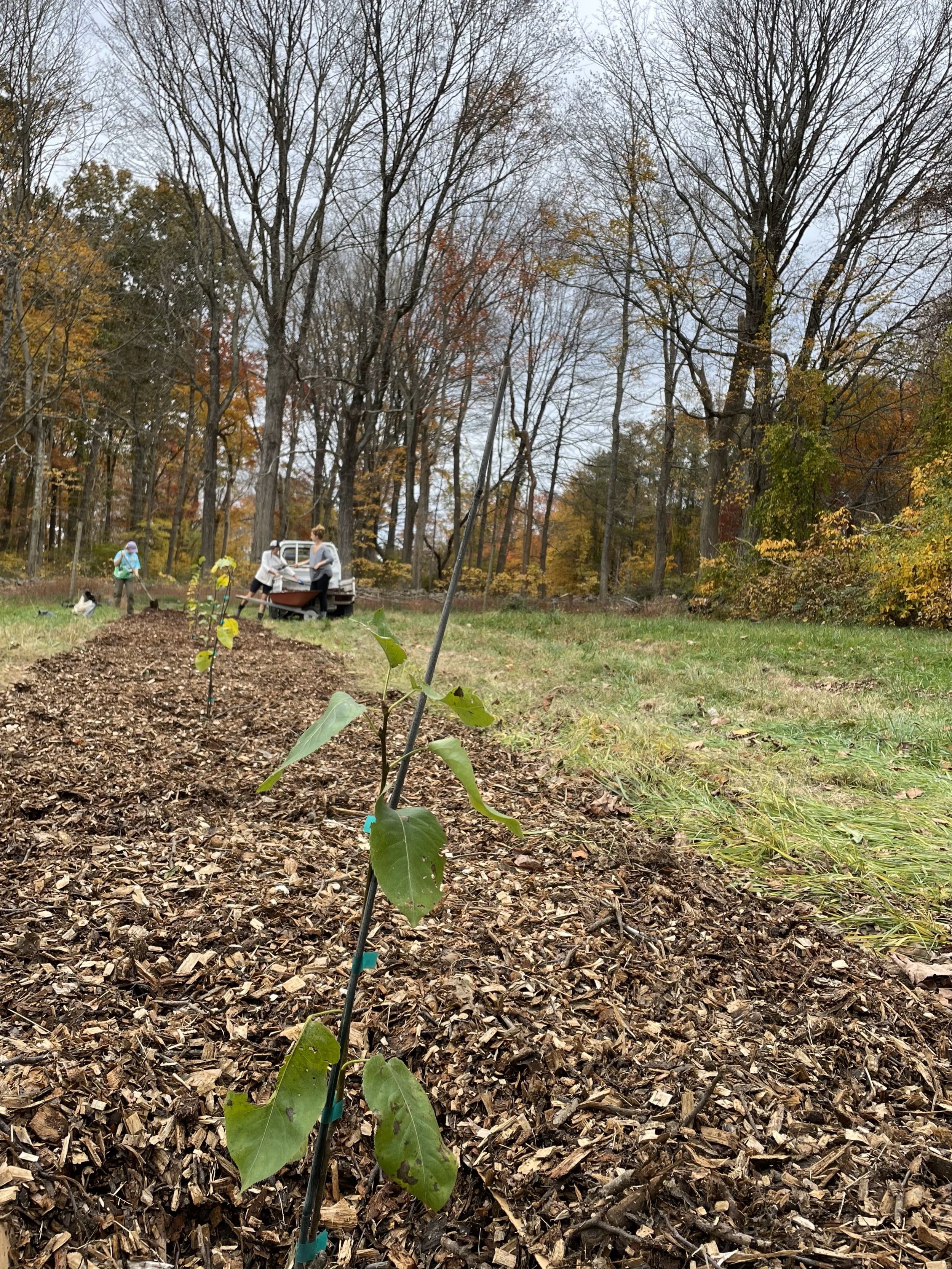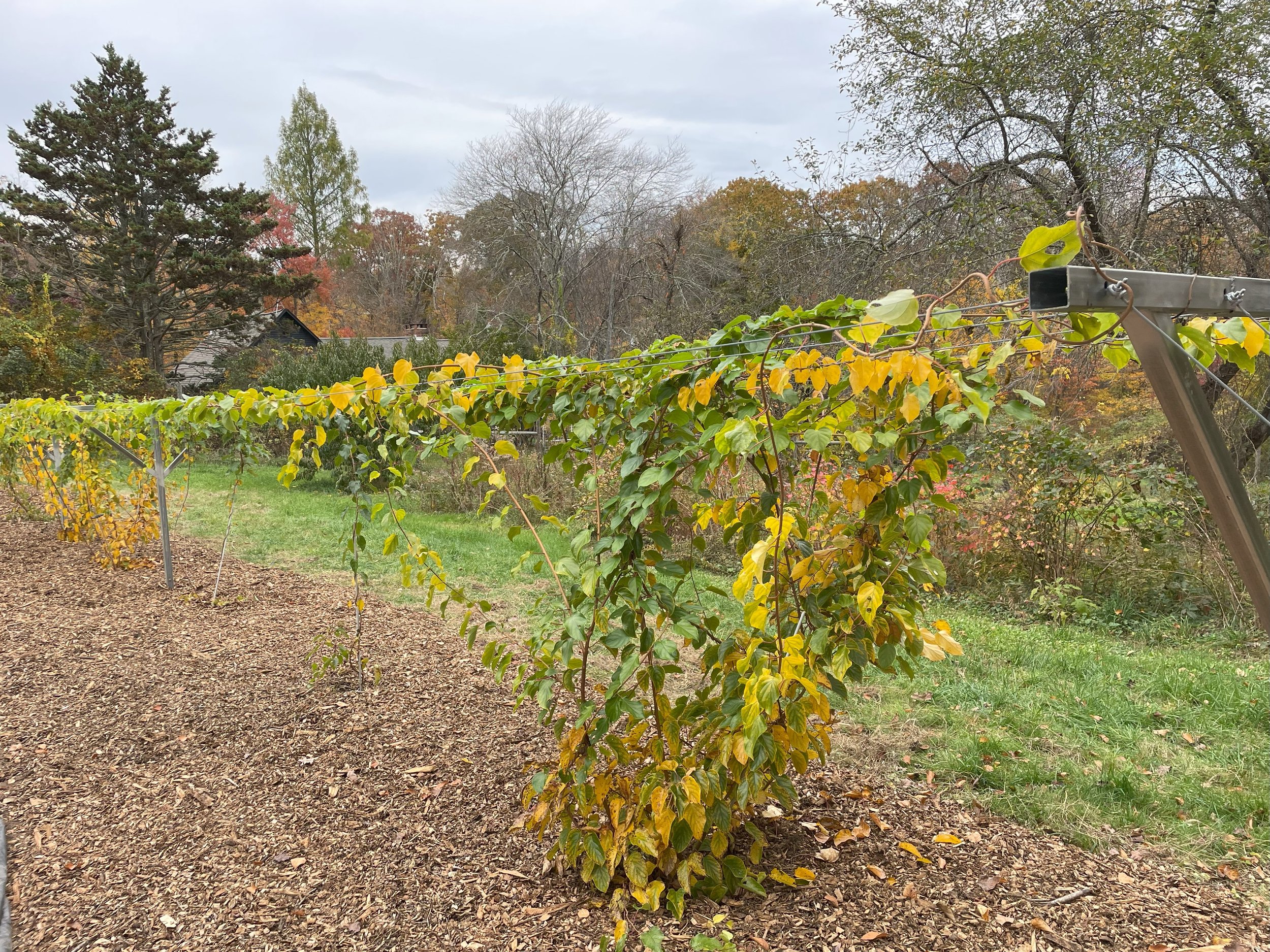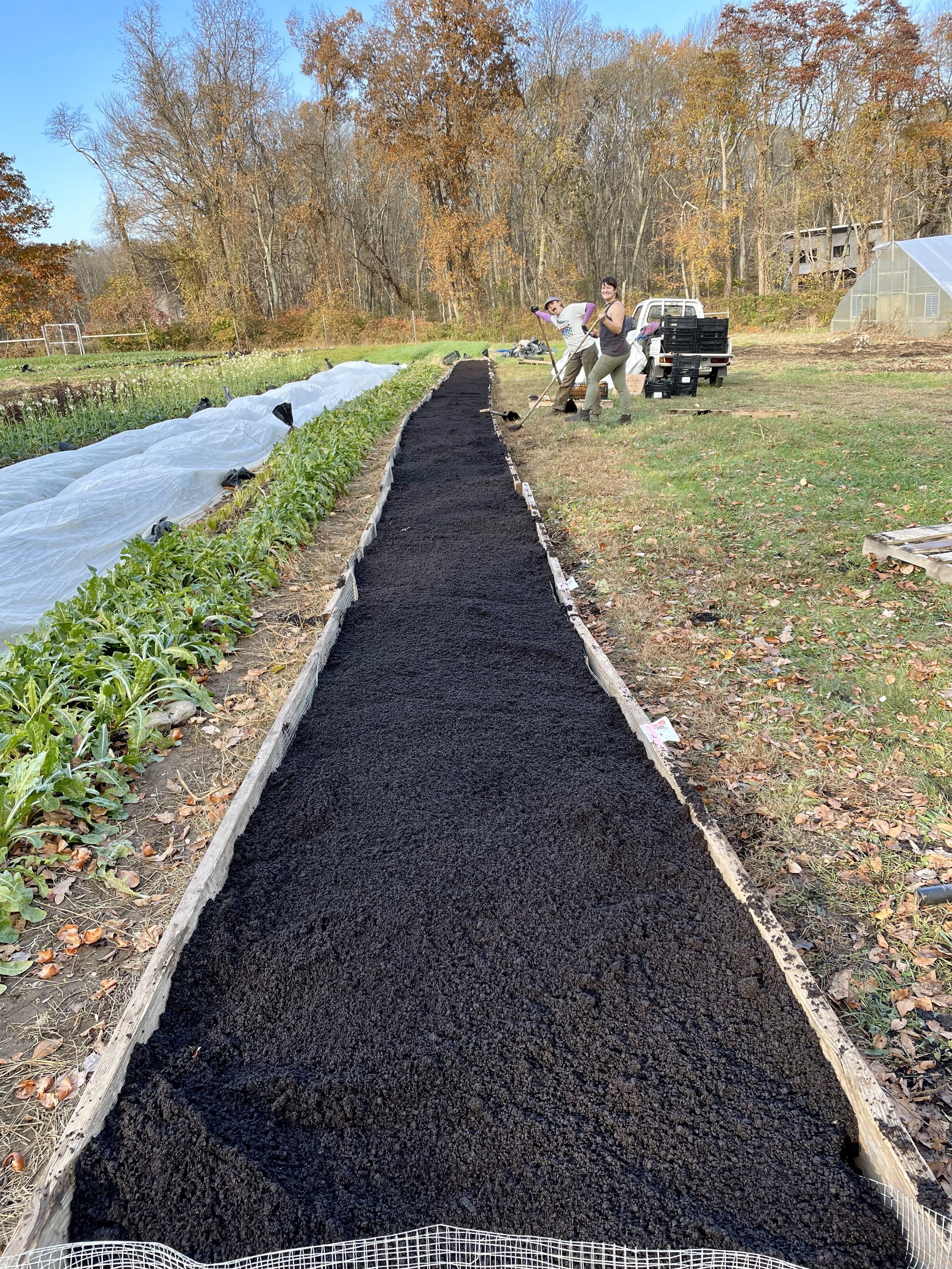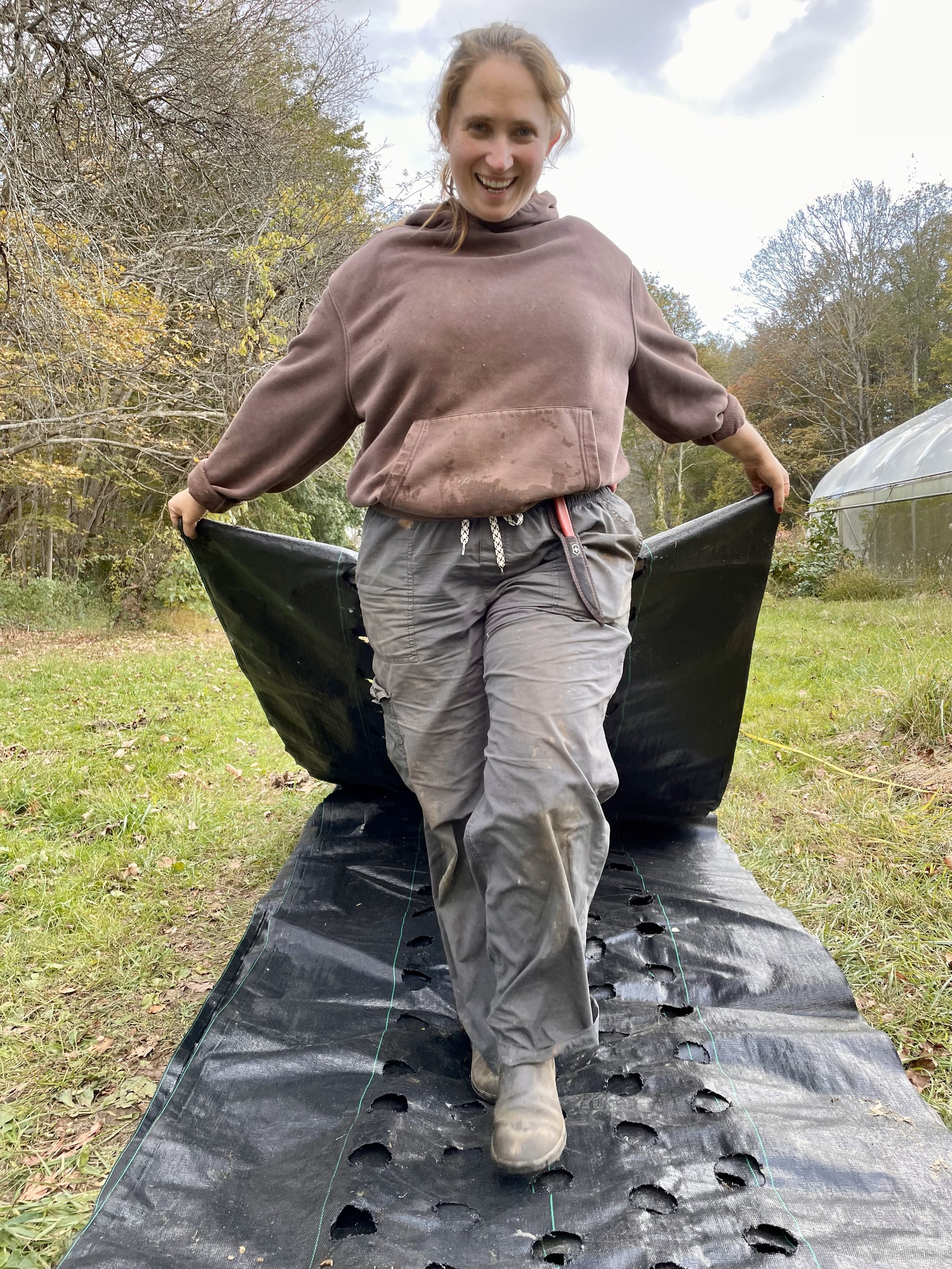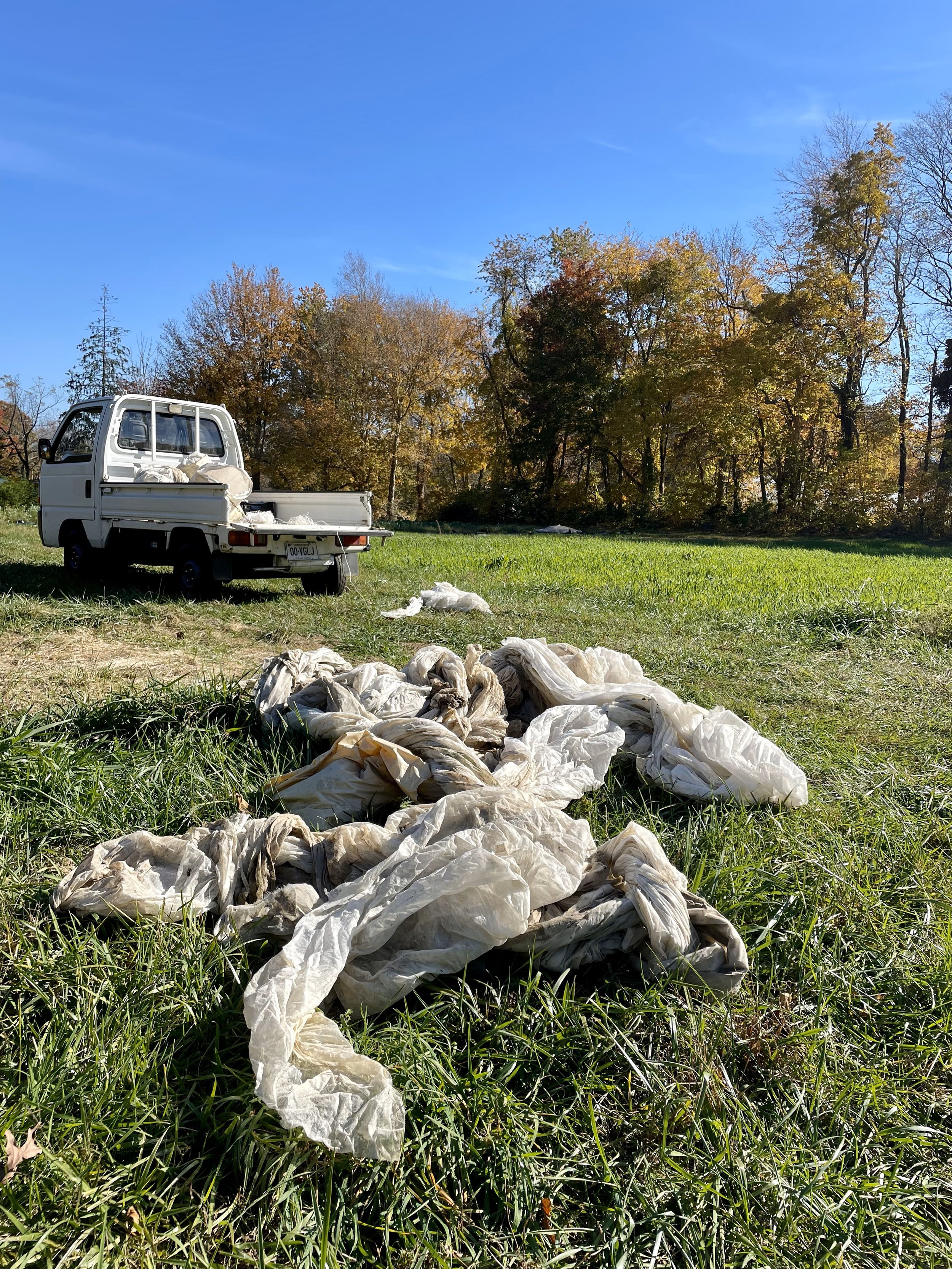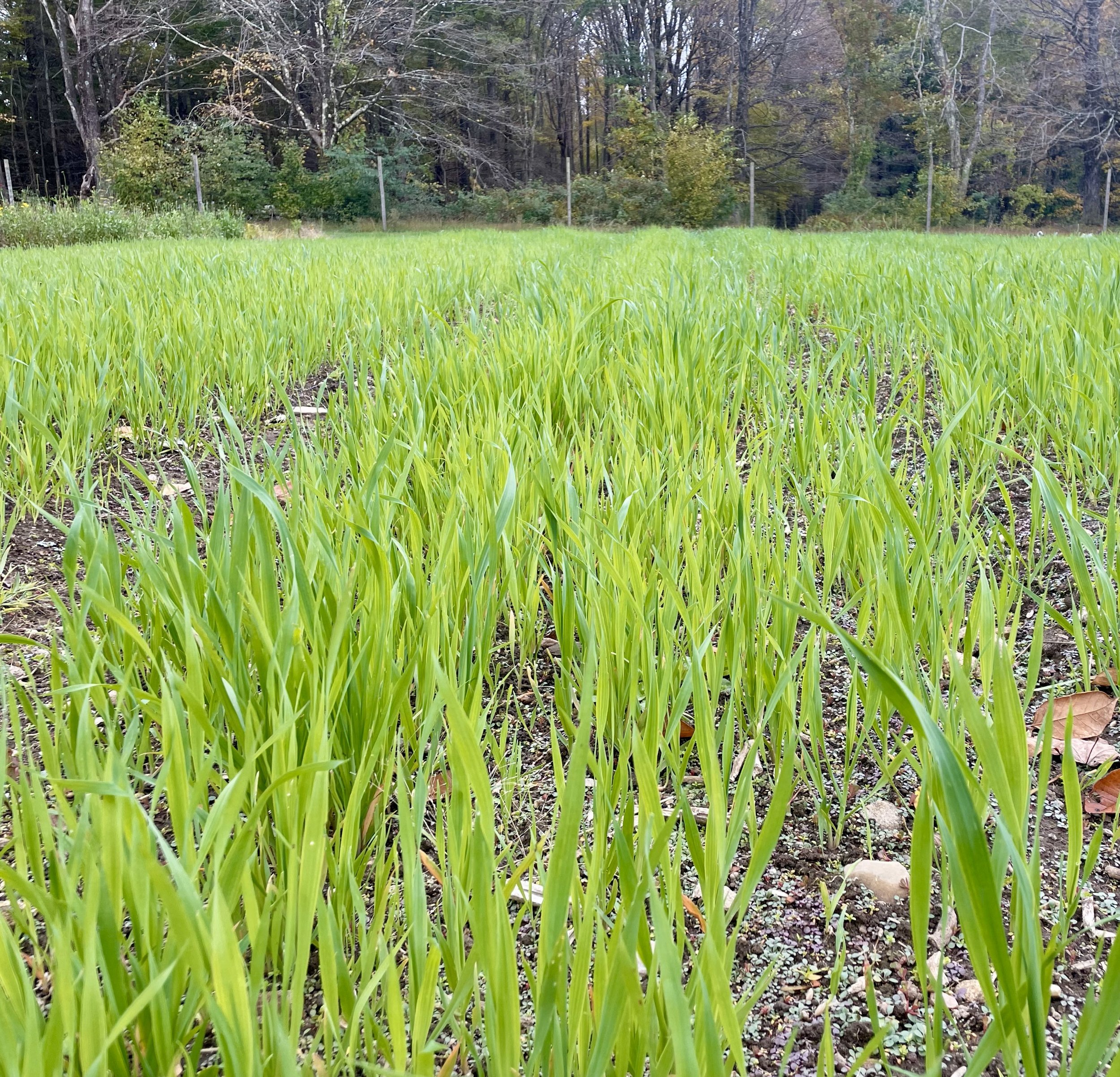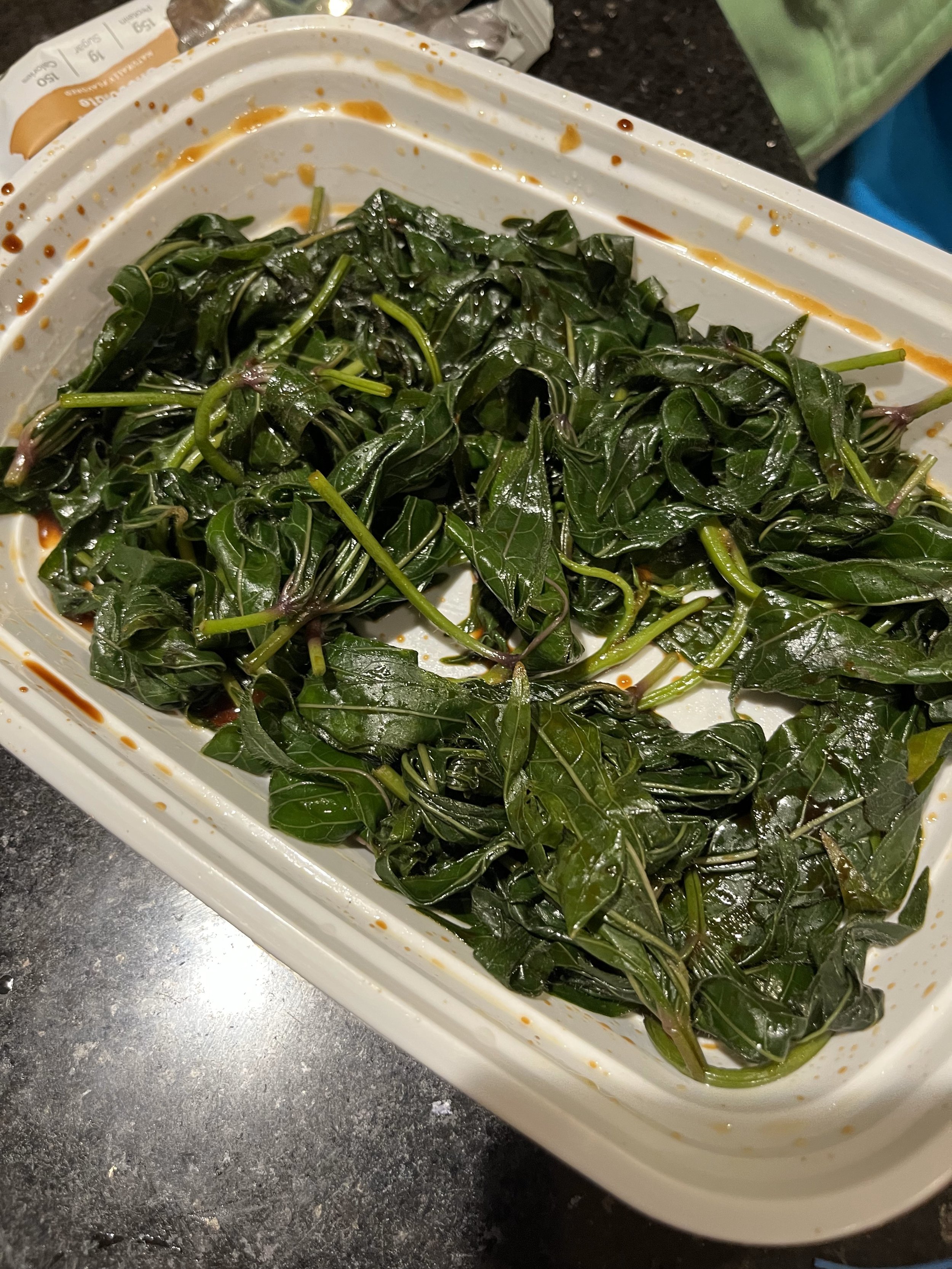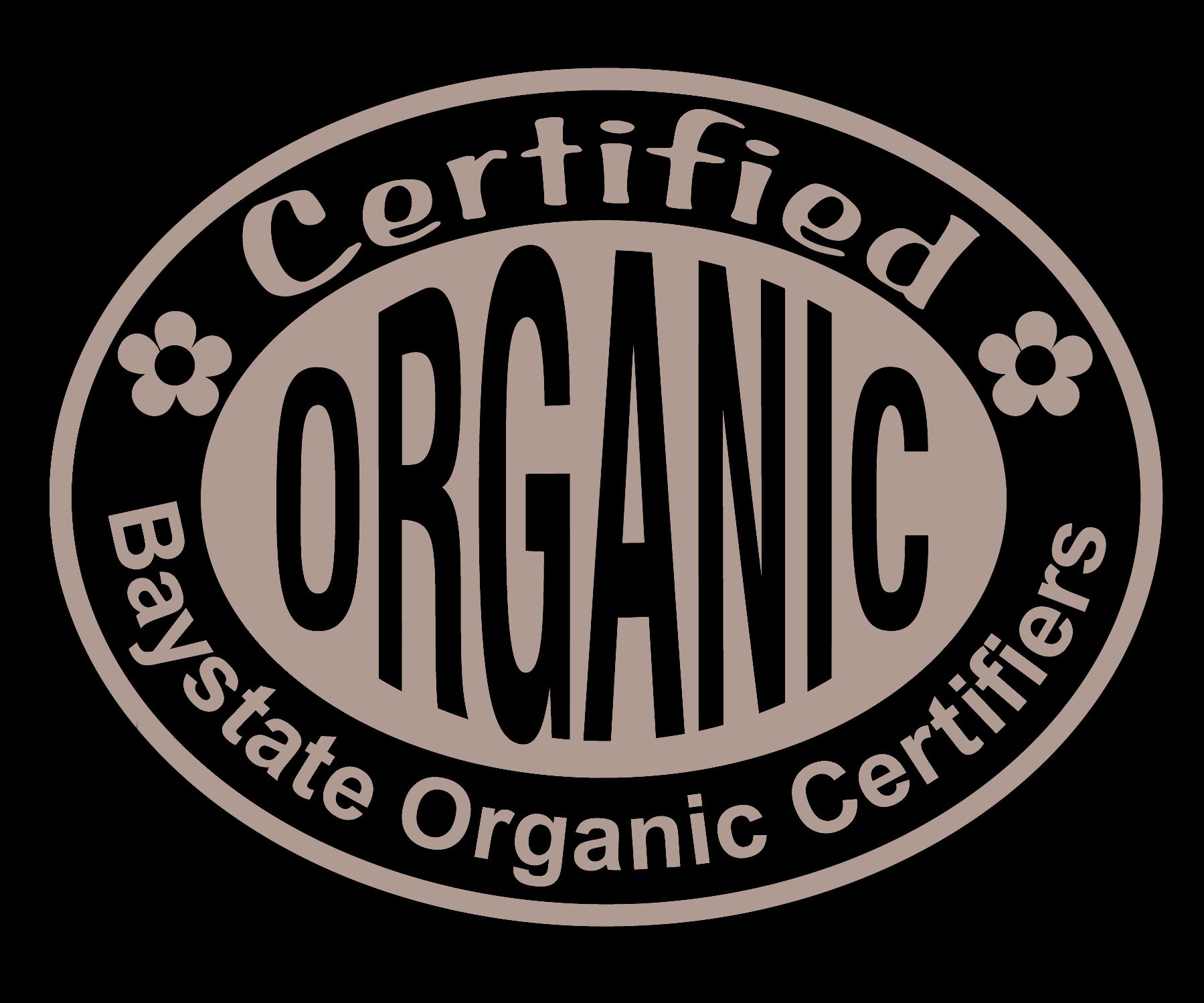The cool, frosty weather may have you believe that your farmers are kicking back, relaxing, and waiting around for spring, and while it does become much easier to stop working and rest when the sun sets at 4:30pm, there’s still plenty to accomplish within the limited daylight hours of November! Now that we no longer need to harvest fresh flowers, tomatoes, and peppers, time abounds for the less urgent but equally important tasks. Recently, the orchard has been the lucky recipient of this extra time and attention.
The former owners (and parents of our lovely and supportive neighbor, Peggy) had grown a variety of fruit trees on the property before Aaron, Caitlin, Rachel, and Elise (or, for convenience, ACRE) purchased the land back in 2014. Check out the orchard map drawn by Peggy’s parents! Many of the trees suffered damage due to severe weather and pest pressure over the years, and ACRE have always been excited about reviving the orchard.
Jaime, Shannon, and Kathleen have done a fabulous job of laying down compost and mulching the orchard. It’s no easy feat on a farm with minimal mechanization!
Two seasons ago, under Elise’s expert management, we planted two rows of hardy kiwis and a row of paw paws. The hardy kiwi vines have been steadily growing around their trellis, which Aaron constructed for them. Both the kiwis and paw paws should begin bearing fruit in about three years. This year, we added even more trees, including seckel pears, Asian pears, quince, and medlar (shout out to Cricket Hill Garden, who started these trees, for their skill and expertise). It will likely take five to seven years until the pears, quince, and medlar provide fruit enough to bring to the farmers’ market table. It’s exciting to make investments in these perennial crops, and hopefully, they provide something to look forward to for our community of steadfast customers.
The kiwis make themselves at home on their trellis!
November brings other more routine projects as well.
For one, garlic planting! Rachel, Kathleen, Isa, and I planted 2,400 cloves of seed garlic earlier this month. The cloves must be planted at least 6 inches deep to prevent the freeze-thaw cycle from pushing them up to the soil surface, where they would succumb to damage from the cold. The beds are then heavily mulched with leaves to keep them warm and safe from erosion through the winter and from weeds in the spring. We’ll keep an eye on the beds to see if they need any irrigation in the springtime. Other than that, we’ll work with the garlic next when we harvest scapes in June 2024. See you next summer, garlic!
For two, tulip planting! Our tulips are planted in a 100 ft-long raised bed, which is deconstructed and reconstructed in a new location each season as part of the farm’s crop rotation plan (dutifully managed by Rachel). We lay out the bulbs from earliest to latest blooming variety in an “egg carton” fashion and then cover them in a deep layer of compost. Is it a tedious process? Yes. Is it also very rewarding? Yes, at least for those of us who enjoy order, straight lines, and the look of a smooth bed top at the end.
Caley and Shannon lay the groundwork.
Tulip bulbs, egg-carton-style.
Almost there…
Planting complete!
From all of us at Four Root Farm, we hope that everyone enjoyed their Thanksgiving holiday! We hope that we provided delicious produce for your meal and maybe even an everlasting bouquet for your table. We are grateful for you, our community and customers. We are honored and excited to continue growing food and flowers for you; from the garlic and tulips of next season to the kiwis, paws paws, and pears of the years to come.
